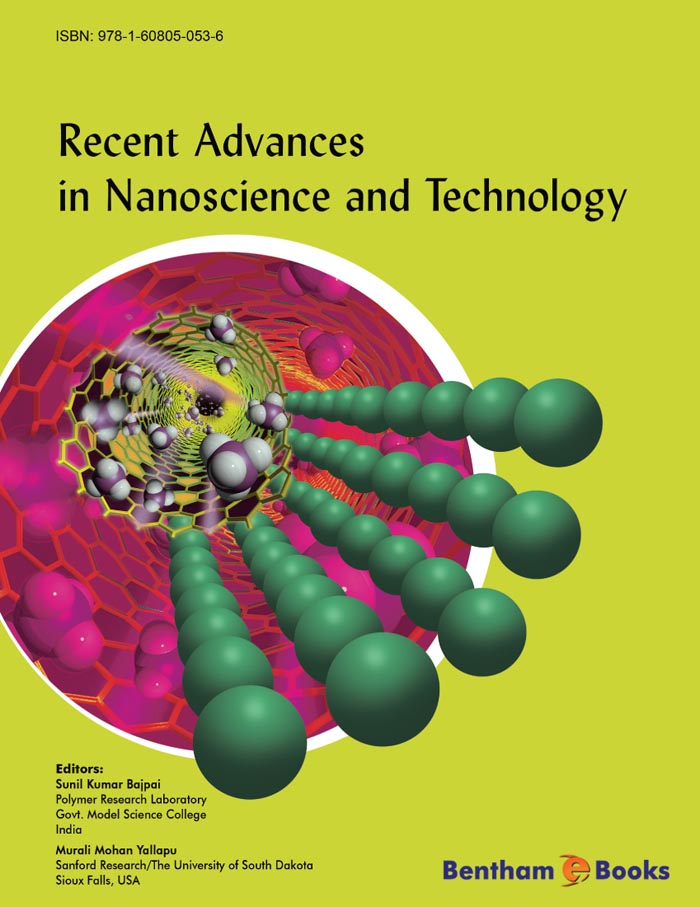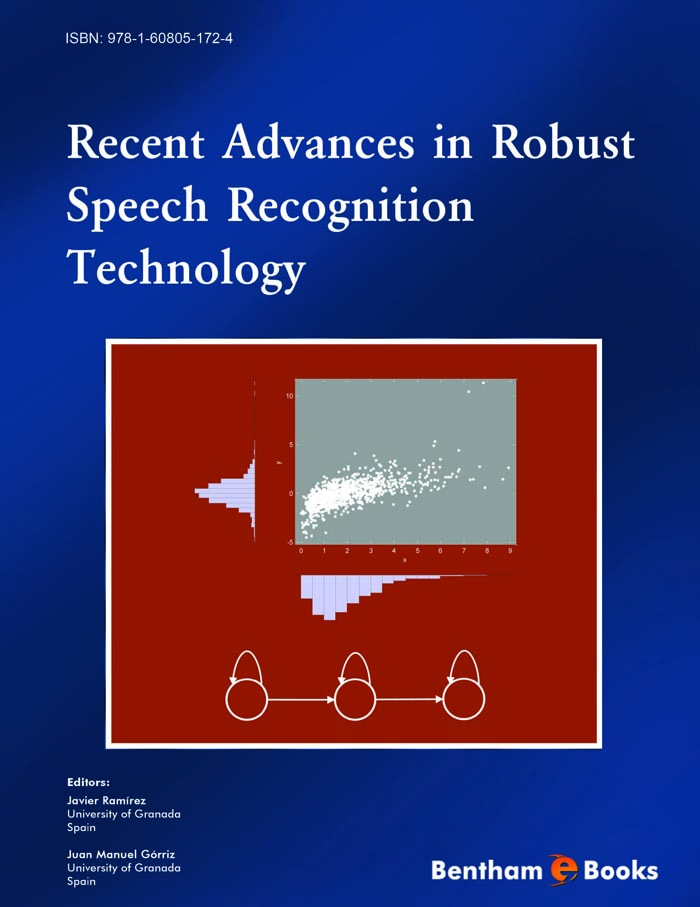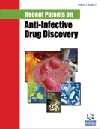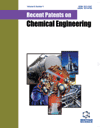Bentham Science Publishers
Bentham Science Publishers is a major publisher of more than 100 peer-reviewed science, technology and medical (STM) journals, along with a rapidly growing collection of eBooks. Since 1993, Bentham Science Publishers has been catering to the information needs of the pharmaceutical, engineering, biomedical and medical research community.1521 - 1540 of 1906 results
-
-
Recent Advances in Medicinal Chemistry: Volume 2
More LessRecent Advances in Medicinal Chemistry is a book series focused on leading-edge research on developments in rational drug design, synthetic chemistry, bioorganic chemistry, high-throughput screening, combinatorial chemistry, drug targets, and natural product research and structure-activity relationship studies. The series presents highly cited contributions first published in the impact factor journal Mini-Reviews in Medicinal Chemistry. Contributors to this volume have updated their work with new experimental data and references following their initial research. Each volume highlights a number of important topics in current research in medicinal chemistry.
Selected chapters in this volume include:
- A brief review of polyphenols as phytotherapeutic agents
- Flavonoids in foods and biological samples
- Cannabinoid use in treating Parkinson's Disease symptoms
… And much more.
-
-
-
Recent Advances in Molecular and Translational Medicine: Updates in Precision Medicine
More LessPrecision medicine is a disruptive innovation with a fast-evolving pace in the healthcare ecosystem. Precision medicine enables precise diagnosis and targeted treatment by considering individual variability in the abnormalities of causative genes and molecular drivers behind biochemical mechanisms. A vast amount of data created by advanced omics technologies is a foundation of precision medicines success, and the implications of the findings from these technologies can potentially improve clinical outcomes.
Recent Advances in Molecular and Translational Medicine: Updates in Precision Medicine presents essential information of molecular and translational research in precision medicine, with a specific focus on pediatrics. This book provides an accessible introduction to omics technologies, gives a detailed explanation of bioinformatics workflows to interpret high-throughput omics profiles for molecular diagnosis, and collects some of the cutting-edge research for precise therapeutics. Contributions to the book have been provided by experts in biomedical engineering and clinical practice, thus, bringing an informed perspective to the reader on each topic. The book is a valuable resource for postgraduate students, researchers, data scientists and clinicians interested in precision medicine, as well as researchers in the field of genetics and pediatrics who are interested in understanding the role of precision medicine in clinical practice.
-
-
-
Recent Advances in Nanoscience and Technology
More LessThe present Ebook deals with various strategies that have frequently been followed to fabricate nanostructures of required size and shape, and with required functionalities to enable them to be used in a wide spectrum of industrial, biomedical and technological applications. This Ebook presents unique novel methodologies of synthesis of nanoparticles by various means.
-
-
-
Recent Advances in Robust Speech Recognition Technology
More LessThis E-book is a collection of articles that describe advances in speech recognition technology. Robustness in speech recognition refers to the need to maintain high speech recognition accuracy even when the quality of the input speech is degraded, or when the acoustical, articulate, or phonetic characteristics of speech in the training and testing environments differ. Obstacles to robust recognition include acoustical degradations produced by additive noise, the effects of linear filtering, nonlinearities in transduction or transmission, as well as impulsive interfering sources, and diminished accuracy caused by changes in articulation produced by the presence of high-intensity noise sources. Although progress over the past decade has been impressive, there are significant obstacles to overcome before speech recognition systems can reach their full potential. Automatic speech recognition (ASR) systems must be robust to all levels, so that they can handle background or channel noise, the occurrence on unfamiliar words, new accents, new users, or unanticipated inputs. They must exhibit more 'intelligence' and integrate speech with other modalities, deriving the user's intent by combining speech with facial expressions, eye movements, gestures, and other input features, and communicating back to the user through multimedia responses. Therefore, as speech recognition technology is transferred from the laboratory to the marketplace, robustness in recognition becomes increasingly significant. This E-book should be useful to computer engineers interested in recent developments in speech recognition technology.
-
-
-
Recent Advances in the Application of Marine Natural Products as Antimicrobial Agents
Frontiers in Antimicrobial Agents: Volume 3
More LessWhile the world is grappling with the growing problem of antibiotic resistance, marine organisms offer a promising solution with their diverse repertoire of bioactive compounds. This thematic volume explores the untapped potential of marine organisms in the fight against microbial threats. The focus of the 17 featured chapters lies in highlighting the vast array of antimicrobial agents that can be found within marine environments. The chapters provide in-depth knowledge about the latest discoveries, advancements and future needs in antimicrobial research. Readers will learn about astonishing discoveries of natural compounds with remarkable antimicrobial properties and sources. The list of agents covered in the book includes synthetic derivatives, bioactive polysaccharides and marine viruses. The book also includes chapters that cover various stages of the antimicrobial drug development process, providing an overview of recent antimicrobial agents derived from marine organisms, preclinical studies and the identification of patented drugs sourced from the ocean. Furthermore, the book sheds light on the diverse applications of these marine-derived compounds, spanning the fields of medicine, agriculture, and industry.
Professionals in the fields of microbiology, marine biology, pharmaceutical sciences, and drug development will gain valuable insights into the use of marine organisms as a source of antimicrobial agents.
-
-
-
Recent Advances in the Synthesis of Organic Compounds to Combat Neglected Tropical Diseases
More LessThe World Health Organization (WHO) has reported 14 diseases that are occurring exclusively in tropical areas. Most of these diseases are infectious and mainly affect poor populations. Some of these diseases include malaria, dengue fever, leishmaniasis and Chagas disease. Therefore, an acute need for increasing the arsenal of drugs is required to fight against these neglected diseases for the guaranteed recovery and relief of many patients.
This eBook gathers important scientific research performed by scientists worldwide showing the state of the art of Medicinal Chemistry dedicated to the synthesis of compounds that are potentially bioactive against the causative agents of neglected diseases.
The contents of this eBook include chapters on recent advances in synthetic organic compounds for the prevention of Chagas disease, recent advances in the discovery of small organic molecules for the prevention and treatment of dengue fever, leishmaniasis, leprosy, therapeutic arsenal and drug discovery for lymphatic filariasis, therapeutic agents for the treatment of malaria, schistosomiasis and synthetic organic compounds as potential antitubercular drugs.
This eBook is intended for undergraduate and graduate students in institutes, colleges, universities and academies who want to specialize in the field of organic synthesis and medicinal chemistry. This eBook will also be a valuable resource of information for researchers in this field.
-
-
-
Recent Advances in the Treatment of Neurodegenerative Disorders
More LessResearchers have tried various effective treatments that prevent the progressive neurodegeneration of neurons within the brain. Parkinson's disease (PD), Alzheimer's disease (AD), and Multiple sclerosis (MS) are some of the most common neurodegenerative diseases (NDDs). Recent Advances in the Treatment of Neurodegenerative Disorders provides interesting updates on treatments of these neurological disorders. Ten chapters have been contributed by experts in pharmacology and give a unique perspective to reader on special topics in this area, including the treatment of neurodegenerative treatment of neurodegenerative disease through ayurveda and phytochemicals, the therapeutic role of vitamins in Parkinson's disease, mushrooms in NDD treatment, MS treatment, ALS treatment and the use of nanoparticles and nano formulations in NDD treatment. This is an informative reference for pharmacologists, medicinal chemists and healthcare professionals (general practitioners and neurologists) seeking updates in the treatment of some common neurodegenerative disorders.
-
-
-
Recent Developments in Artificial Intelligence and Communication Technologies
More LessThis book is a review of recent artificial intelligence approaches, initiatives and applications in engineering and science fields. It features contributions that highlight the use of techniques such as machine learning, mining engineering, modeling and simulation, and fuzzy logic methods in the fields of communication, networking and information engineering.
The collection of chapters should inspire scholars involved in theoretical and applied sciences to contribute to research using computational intelligence principles and methods in their respective research communities. Professionals working on systems engineering, communications, innovative computing systems and adaptive technologies for sustainable growth, will also be able to benefit from the information provided in the book.
-
-
-
Recent Developments in Manufacturing Robotic Systems and Automation
More LessThis book is an updated reference of research activities that bring together various theories, methods, and technologies of robotic systems and automation for manufacturing and related fields. The book includes articles on state-of-the-art robotic systems and automation for diverse avenues in automation such as advanced manufacturing, developments in design methodology, kinematics and dynamics analysis, performance analysis and evaluation, intelligent manufacturing, assembly, sensors, control theory and practice, human-machine interface, and so on. This book is an excellent research reference for engineers, researchers, and students that range from senior undergraduates to advanced doctoral students and professionals who are interested in robotics and automation.
-
-
-
Recent Innovations in Chemical Engineering
More LessRecent Innovations in Chemical Engineering publishes full-length/mini-reviews, research articles, and guest-edited thematic issues on recent innovations in chemical engineering.
Recent innovations may also include important recent patents, new technologies, methodologies, techniques, new materials, clean energy, energy storage, carbon neutrality, and applications related to chemical engineering. This field also covers resources that are involved in the operation and design of chemical plants and equipment for the conversion of raw materials into various end products.
The journal is essential reading for all researchers involved in chemical engineering science.
Recent Innovations in Chemical Engineering is an international, peer-reviewed journal on all aspects of chemical engineering, published quarterly (print and online) by Bentham Science Publishers.
-
-
-
Recent Patents on Anti-Cancer Drug Discovery
More LessRecent Patents on Anti-Cancer Drug Discovery publishes review/mini review and research articles that reflect or deal with studies in relation to a patent, application of reported patents in a study, discussion of comparison of results regarding application of a given patent, etc., and also guest edited thematic issues on recent patents in the field of anti-cancer drug discovery e.g. on novel bioactive compounds, analogs, targets & predictive biomarkers & drug efficacy biomarkers. The journal also publishes book reviews of eBooks and books on anti-cancer drug discovery. A selection of important and recent patents on anti-cancer drug discovery is also included in the journal. The journal is essential reading for all researchers involved in anti-cancer drug design and discovery. The journal also covers recent research (where patents have been registered) in fast emerging therapeutic areas/targets & therapeutic agents related to anti-cancer drug discovery.
Recent Patents on Anti-Cancer Drug Discovery is an international, peer-reviewed journal on all aspects of anti-cancer drug discovery, published bimonthly (print & online) by Bentham Science Publishers.
-
-
-
Recent Patents on Anti-Infective Drug Discovery
More LessRecent Patents on Anti-Infective Drug Discovery publishes review articles on recent patents in the field of anti-infective drug discovery e.g. on novel bioactive compounds, analogs & targets. A selection of important and recent patents on anti-infective drug discovery is also included in the journal. The journal is essential reading for all researchers involved in anti-infective drug design and discovery.
-
-
-
Recent Patents on Biomarkers
More LessRecent Patents on Biomarkers publishes review and research articles, and guest edited thematic issues on important recent patents on biomarkers. The coverage includes novel biomarkers in basic, medical, environmental, and pharmaceutical research. A selection of important and recent patents on biomarkers is also included in the journal. The journal is essential reading for all researchers involved in biomarker research and discovery. The journal also covers recent research (where patents have been registered) in fast emerging patent biomarker applications; discovery and validation are covered for drug discovery, clinical development and molecular diagnostics.
-
-
-
Recent Patents on Biomedical Engineering (Discontinued)
More LessRecent Patents on Biomedical Engineering publishes reviews, research articles and guest edited thematic issues on recent patents in the field of biomedical engineering e.g. on tissue and cellular engineering; biological signal processing and instrumentation; biomechanics, electrophysiology; imaging, medical devices, surgical devices and diagnostic instruments. The journal also covers recent research (where patents have been registered) in fast emerging therapeutic areas/targets & therapeutic agents related to biomedical engineering.
-
-
-
Recent Patents on Biotechnology
More LessRecent Patents on Biotechnology aims to cover all the latest and outstanding developments in Biotechnology. Each issue of the journal includes full-length/mini-reviews covering a range of current topics in all areas of Biotechnology that reflect or deal with studies concerning a patent or applications of reported patents. Invited and unsolicited review articles are also welcome. Areas of interest cover the whole biotechnology cycle from applied research to product development, including intellectual property rights, regulatory affairs, and business in biotechnology. Contributions regarding aspects of sustainable biotechnology, bioeconomy, and circular biotechnology are particularly encouraged. Patent highlights, briefly (2-3 pages) describing an important recent patent and its impact/applications in biotechnology, are also published. A selection of important and recent patents on biotechnology is also included in the journal. Guest edited thematic issues on recent patents in the field of biotechnology are also welcome. Original research articles that describe the discovery, development, and study of biomolecules, cells, or materials are also published. Moreover, the journal also encourages papers reporting research work on the development of new or novel biomolecules that have considerable interest and potential as future biotech products. This journal is essential reading for all researchers involved in the fields of biotechnology in academia and industry.
Scientific areas within the scope of the journal include:
Medical Biotechnology, Pharmaceutical Biotechnology, Food Biotechnology, Microbial Biotechnology, Plant Biotechnology, Marine Biotechnology, Environmental Biotechnology, Animal Biotechnology, Protein, and Enzyme Biotechnology, Biocatalysis, Synthetic Biotechnology, Systems Biotechnology, Nanobiotechnology, Biomaterials, Forensic Biotechnology, Bioengineering, Bioprocess Biotechnology, Cell, and Tissue Engineering, Genome Technology, Analytical Biotechnology, Molecular Diagnostics, Biological Warfare, Bioterrorism, Biodefense, Industrial Biotechnology, Desert Biotechnology, Sustainable Biotechnology, Bioeconomy, and Circular Biotechnology, Regulatory affairs in Biotechnology, Intellectual Property Rights and Law in Biotechnology, Entrepreneurship, and Innovation in Business Biotechnology, and Safety and Ethics in Biotechnology.
Recent Patents on Biotechnology is an international, peer-reviewed journal on all aspects of biotechnology, published quarterly (print & online) by Bentham Science Publishers.
-
-
-
Recent Patents on CNS Drug Discovery (Discontinued)
More LessRecent Patents on CNS Drug Discovery publishes review articles on recent patents in the field of CNS drug discovery e.g. novel bioactive compounds, analogs & targets. A selection of important and recent patents on CNS drug discovery is also included in the journal. The journal is essential reading for all researchers involved in CNS drug design and discovery.
-
-
-
Recent Patents on Cardiovascular Drug Discovery (Discontinued)
More LessRecent Patents on Cardiovascular Drug Discovery publishes review articles on recent patents in the field of cardiovascular drug discovery e.g. novel bioactive compounds, analogs & targets. A selection of important and recent patents on cardiovascular drug discovery is also included in the journal. The journal is essential reading for all researchers involved in cardiovascular drug design and discovery.
-
-
-
Recent Patents on Catalysis (Discontinued)
More LessRecent Patents on Catalysis publishes review, research articles and guest edited thematic issues on recent patents in the field of catalysis. The journal aims to provide recent patent information in all areas of catalysis science, including heterogeneous, homogeneous catalysis, synthesis and properties of new catalysts including synthesis and catalytic function of novel inorganic solids and complexes, studies that relate catalytic function to fundamental chemical processes in metal complexes and at surfaces, novel concepts in surface chemistry. A selection of important and recent patents on catalysis is also included in the journal. The journal is essential reading for all academic and industrial researchers, including IP authorities who wish to be kept informed about important patent breakthroughs in catalysis science and technology.
-
-
-
Recent Patents on Chemical Engineering
More LessRecent Patents on Chemical Engineering publishes reviews, research articles and guest edited thematic issues on recent patents in the field of chemical engineering. A selection of important and recent patents on chemical engineering is also included in the journal. The journal is essential reading for all researchers involved in chemical engineering science.
-
-
-
Recent Patents on Computer Science
More LessRecent Patents on Computer Science publishes review and research articles, and guest edited thematic issues on recent patents in all areas of computer science. A selection of important and recent patents on computer science is also included in the journal. The journal is essential reading for all researchers involved in computer science. The journal also covers recent research (where patents have been registered) in fast emerging computation methods, bioinformatics, medical informatics, computer graphics, artificial intelligence, cybernetics, hardware architectures, software, theory and methods involved and related to computer science
-




















